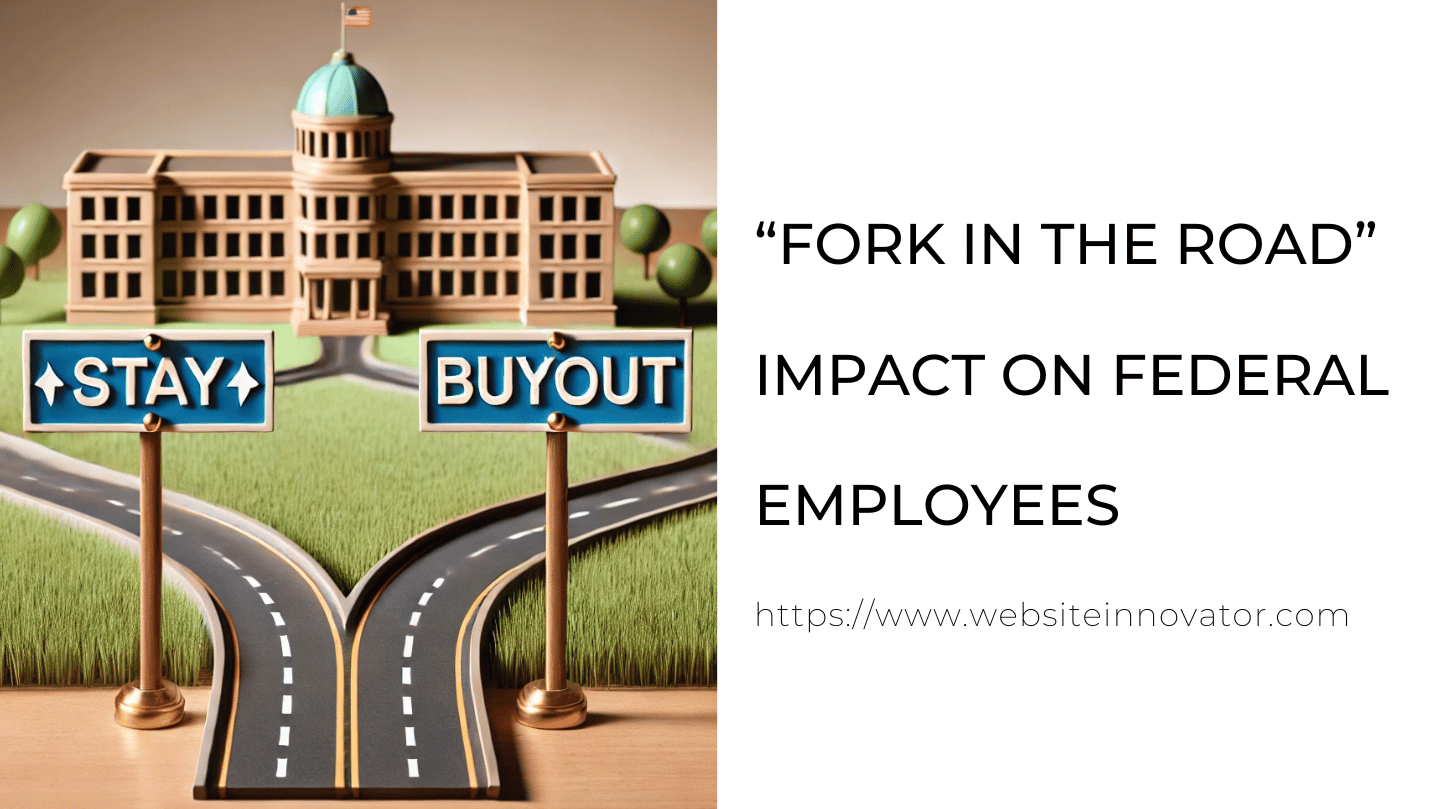
The “Fork in the Road” Impact
Website Innovator is an IT company based in Germantown, MD, leveraging AI-driven technology to analyze policy shifts and market trends. Our goal is to guide federal employees and businesses by providing clarity on rapidly changing environments. Through software development, app development, and web design, we help stakeholders adapt and thrive amid governmental and economic transitions. The “Fork in the Road” deferred resignation program emerged following new federal workforce reforms implemented by President Donald Trump’s administration. A key driver was the administration’s push to streamline the civil service, reduce remote work, and encourage those who are unwilling to adapt or deemed low-performing to depart. This led to the Office of Personnel Management (OPM) creating a buyout-style program offering continued pay and benefits until September 30, 2025, for those who voluntarily resign before February 6, 2025. Another catalyst was President Trump’s move to re-introduce Schedule F—a reclassification mechanism that makes it easier to dismiss career civil servants in policy-related roles. The administration aimed to instill a performance-focused culture, reduce perceived inefficiencies, and promote loyalty among government workers. Resigning: Accepting the deferred resignation includes receiving federal pay and benefits until September 30, 2025 (pending appropriations), immediate freedom to pursue other employment, and exemption from new return-to-office mandates. However, it also means waiving many civil service protections, potentially losing pension accrual, and facing a more competitive private-sector job market—particularly if many skilled federal employees resign at once. Staying: Remaining in federal service preserves your long-term benefits, continuity, and legal protections. Yet, it may involve adjusting to more stringent performance standards, mandatory in-office presence, and new accountability measures that could lead to terminations. With Elon Musk recently appointed as a “special government employee,” tasked with driving efficiency (and, potentially, mass layoffs or reorganizations), many fear a tumultuous environment reminiscent of his swift changes in private ventures. Trump’s second term thus far reflects a preference for reducing what he perceives as bureaucratic bloat. Those who remain may need to adapt to a culture of heightened scrutiny, loyalty tests, and potential reorganizations, including the reintroduction of Schedule F. Much depends on whether Trump’s reforms become permanent or if a future administration reverses them. Historically, large-scale workforce overhauls can be undone, partially or entirely, by subsequent leadership. Potential scenarios include: While the immediate impact targets federal personnel, private-sector professionals and businesses can anticipate: For Federal Employees: - Perform a thorough financial and legal check before resigning. - Network and update resumes/LinkedIn to prepare for private-sector moves. - If staying, maintain rigorous performance documentation and stay adaptable to new office mandates. For Government Contractors: - Position yourself as indispensable by helping agencies handle tasks formerly done by federal staff. - Stay abreast of changing compliance rules, especially around labor and diversity policies. - Recruit from the pool of exiting federal employees to gain inside knowledge of government processes. For IT Professionals: - Highlight cloud, cybersecurity, data science, and project management skills—hot areas in both government and private sectors. - Consider the pros/cons of remote flexibility as some offices revert to onsite requirements. Ultimately, whether one remains in government or transitions out, staying informed, adaptable, and connected is paramount in a rapidly shifting environment. The “Fork in the Road” email and deferred resignation program represent a defining choice for federal employees. While some may find an attractive exit package, others will remain to shape a reconfigured federal workforce. The outcome will impact not just the civil service but businesses and the broader economy. Website Innovator stands ready to assist organizations in navigating these transitions. Our expertise in software development, app development, and web design helps new businesses establish a digital presence or aids existing enterprises in reducing operational costs. We also advise on strategic implementation of technology solutions to adapt to evolving federal and market landscapes. In uncertain times, our mission remains: to guide both public and private sectors toward sustainable, technology-driven success.1. Purpose: Website Innovator’s Role in Trend Analysis
2. Why “Fork in the Road” Started
3. Things to Consider for Government Employees Before February 6, 2025
4. Potential Outcomes of Resigning vs. Staying (Considering Trump and Elon Musk’s Roles)
5. Future Forecast for Government Work and Government Contracting Business During the Trump Period
6. Future Forecast After Trump Period
7. Insights for Non-Government Employees and Things to Consider
8. Career Strategy During Trump Period
9. Conclusion
